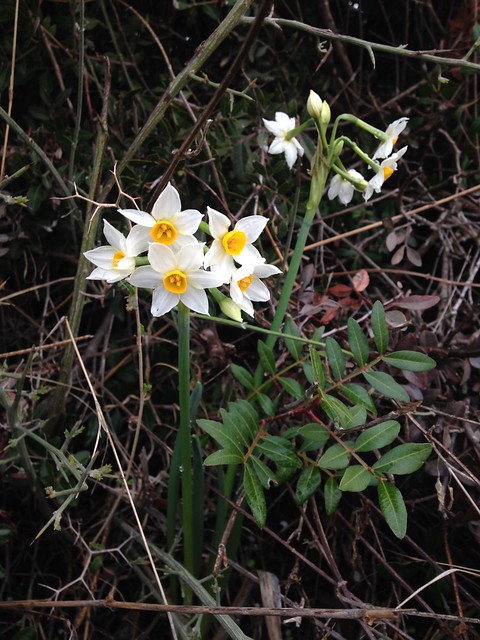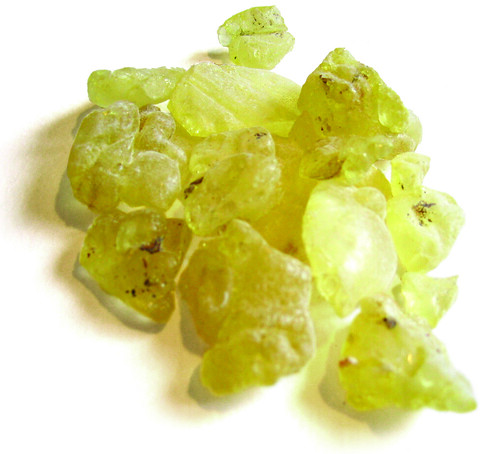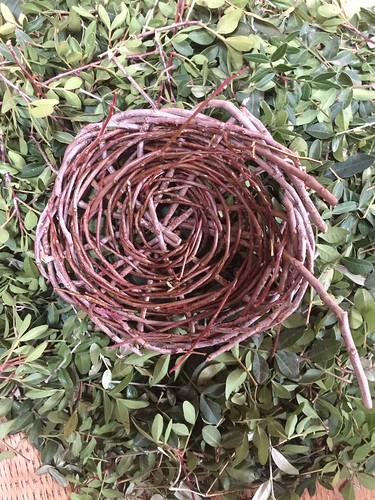
Ines of
All I Am A Redhead has invited me and a bunch of other fragrance bloggers to write about the scents of the Mediterranean the world over. I can't think of a better summer topic so this will be a bit of a nostalgic summer post for me. Although thanks to the warmish weather, I'm able to enjoy the beach this year - both sand and swimming - on a daily basis.
Of course, there is no comparison between the two. The Pacific ocean is deep and vast, and in the Pacific Northwest it rarely reaches temperatures that make it hypothermia-risk-free. Even in the middle of the summer when it’s relatively warm it doesn’t even reach room temperature… The Mediterranean, on the other hand, is like a little kid’s pool in comparison, and just as warm. That comes with all kinds of interesting “side effects” which I have learned to associate with oceans and sea. Therefore am always a bit disappointed at the lack of them here, even though I live way closer to the ocean here than when I lived in Israel. So lets’ begin with the most important Mediterranean scent of them all – the scent of the sea itself.
Sea salt, Seaweed and FishWhen approaching the sea, there is always a strong scent of seaweed, sea salt and fish. This smells is every so much fainter here by the Pacific ocean. Party because it is so much colder at any given moment. But also for some reason I think the water here is far less salty (the melting icebergs, perhaps?).
When arriving at the beach, no matter where – up north (Banana Beach aka Achziv beach, near Kibbutz Achziv in the Western Galilee), in Tel Aviv or down south in the dunes near Ashkelon – there is an intense sense of freedom and mystery the moment that sea smell hits the nose. It’s a vibrant scent that combines the water evaporating from the salty sea, the warming seaweed and algae dancing in its azure waters, the fish (dead or alive) that inhabit its warm and friendly water. And than there is the endless erosion of anything that’s built close to the sea: the buildings get literally eaten by the salty air. Rust forms on all the fences and window bars. And even stone seems to be eaten by the salty kiss of the balmy ocean breezes.
And than there are the amazing fresh seafood restaurants right by the water in the ancient port cities – Jaffa, Akko – you can eat the fish right after it was caught by the fishermen and it’s usually simply prepared by pan-frying and served with fresh lemon wedges. I’m not a fish eater, but walks on the old ports of this ancient cities seems incomplete without getting a whiff of the catch of the day being cooked and served right by the water and the boats. And if there could be any good place to eat fish, that would be it – right where it was caught. The one rare occasion when I felt deeply compelled to try fish was on the water of another Mediterranean beach – at a seafront restaurant in Cannes.
First RainRainfall is sacred and sparse in the region, and there is always a special smell after it hit the ground first after the long dry summer. Unlike British Columbia, where rain can happen any day and any time of the year, it usually only rains in the winter. And in that transition between late fall and winter, the arrival of the first rain is so magical that we even have a special name for it in Hebrew (Yoreh).
Olives and Olive OilAfter the first rain arrives, it washes away the dust from all the plants, including the olive branches and the fruit on it, that should reach optimal ripeness by this time and becomes ready for picking. A trace of the smell of fresh green olives remains in virgin olive oil. But it is so much stonger when you slash the green olives or crack them in preparation for pickling. Pickeld green olives, black olives in brine and virgin olive oil are the best ways to enjoy olives. There are lots of mediocre quality olives spread the world over, but those who come from the true olive regions in the world are very picky and know how to pick them. A real olive should have character in both texture and flavour. If you can’t figure it out, find someone who knows to show you what a real olive should be like…
And as for olive oil – it should be fragrant as well, and can be used in so many other ways besides food. I’ve already written about this before in my article
Virtues of Olive Oil.
There are not too many perfumes that have an actual olive note in them. The only one that I know of with a true olive fruit note in it is being discontinued –
Cognac by Aftelier.
LemonNot a native of the Mediterranean region, but it certainly made itself at home there. It has become such a staple in our kitchens and a favourite just as much if not more than the oranges. And when it’s not available or in season everyone is in panic and helpless about hwo to dress their salads. Vegetables are a staple food, unlike North America where everyone overeats starch, we love our vegetables in the Mediterranean sea, because they taste so fine; nevertheless, they taste better with lemons!
And speaking of citrus, one perfume which I find particularly Mediterranean is non other than Eau d’Orange Vert. I’ve been wearing it all summer this year and found it to be (surprise surprise!) not boring at all. I usually find citrus scents to bore me to tears, but not this one.
BasilGrowing basil in a sun-drenched garden results in a very fragrant, potent, spicy and flavourful herb that makes any pesto or salad or dish taste amazing. There is something about basil that is just plain pleasurable and cheerful, whether on a pizza or in a perfume. Perhaps this is why I love
Le Parfum de Thérèse so much. It’s such a true Mediterranean perfume – perhaps one of the very few that can be worn in the excess of heat as well.
Eau Sauvage is another basil-infused perfume that is refreshing and classy. And it also reminds me another thing I love about the Mediterranean region: men actually take the effort to smell good, rather than try hard to not have any scent at all (the North American way)
TomatoesAlso to go with your olives and basil… Tomatoes are the first thing Israeli like to complain about after they arrive in Canada (well, probably not the first, actually… They will first complain that everyone don’t speak Hebrew). But certainly, after the first visit to the grocery store, seeing the price and how disproportionate it is to the lack of flavour of the coveted fruit, they seek refuge in complaining about it. That being said, Israelis have been complaining about tomatoes for generations now. It seems like every generation, the tomatoes become worse than the previous one. Growing up, we grew our own tomatoes, and the variety we grew was not the Roma tomatoes (over there the variety is called “Moneymaker”) but “Mary Monde”, which is more juicy and flavourful and very offly shaped, with a little of yellow hued stripes on their skins. These were good tomatoes. What you find in most of the markets in Israel is a far cry from what a tomato should and could be. The heirloom tomatoes sold at the Farmer’s Markets here in British Columbia are actually better. And of course, they also cost a fortune and you have to line up at 8am on Saturday to get any of them. And than they rot way too fast in your fridge. That is when the complaining portion of this post ends. And to continue with the tomatoes raving – could there be any more exciting and fun scent than that of tomato vines? Anything more summery? There are some perfumes with that note, but not many (i.e.: the ones I know of are
Yerbamateand Folavril; but the only one in which it is actually noticeable is
l’Ombre Dans l’Eau).
FigsAlso a novelty of summer, green figs are the most vividly fragrant fruit, and must be eaten as soon as possible after they have been picked, before they’ve lost their aroma.
Philosykos is the closest perfume to capture this little piece of heaven.
Mountain Treasures: Wild Mountain Thyme, Hyssop, Bay, White Mint, Sage and LabdanumWild herbas are even more exciting than basil, because they grow wild and you find them when you don’t expect them. And of course they are a culinary gem in the form of bouquet garni… or in more unusual places like desserts (chocolate with thyme?) and perfumes (many Chypre perfumes have sage in them, for example, my favourite
Miss Dior).
But of course the most important mountain herb of them all is not really an herb, but the resin that emanates from the rockrose bush, and that is called labdanum. Perfumes would not be what they are today with this precious sweet balsamic resinous scent that is ambery and sun-warmed and beautiful. It forms the base of all ambers, ambery orientals and chypres.
Grapes and WineSpirit was celebrated in the region so much that there are deities in charge of wine (Bacchus or Dionysus). Growing grapes was not exactly ideal where we lived (too humid I think?) and the grapes pretty much turned into wine on the vines, unless the birds got a hold of them first. The sour fermented grapes heating on the vine tucked away from birds inside paper bags makes for a strange olfactory memory… Though it is probably a smell that many of you are familiar with if you ever visited a winery.
Wheat and Freshly Baked BreadWheat was a blessing, and bread was sacred. Bread is the most basic food of the region, and wheat is the basic grain. There was none of the nonsense of “wheat intolerance” and anti-wheat movement when I was growing up. And the most plain bread in Israel, the one subsidized by the government, actually tastes pretty darn good… Actually, not too far from some fancy sour doughs sold here in artisanal bakeries.
Another scent I miss a lot is the freshly baked bread in all grocery stores, supermarkets and corner stores. When I was taking a tour-guiding course in Jerusalem after finishing high school (I was supposed to become a tour-guide in the army, go figure…) we were set up in an apartment right next to the largest bakeries in the country. We thought the location was perfect and there was no doubt that besides the convenience of getting fresh warm bread every morning, we will also be smelling its fine aroma for hours every morning. It filled the whole neighbourhood!
Cold StonesCatacombs, caves, chapels, arched souks and stone paved streets in ancient stone-built cities – these all bring a coolness to this hot region. And there is a certain musty mystery to it that is difficult to explain unless you smelled it. Perhaps it’s similar to vetiver, or even patchouli. But it certainly gets better when the walls have soaked hundreds of years of frankincense and myrrh burning smoke. And than there are also the cold marble floors (or any tile for that matter, because in that area, our homes are made of real bricks and stones and cement, and the floors are tiled, and therefore they can also be cleaned properly! Sorry, I did not mean to rant again besides the tomatoes. But what's with the wall-to-wall carpets everywhere here? How do you expect to have a clean home when it's floors are covered in dirt-and-dust-sponge?!
We don't just mop our floors, we
wash them with water, and soap, and wipe them dry till they are shiny. At least once a week. It's a ritual. And it makes the home smells clean (usually like lemon).
And that brings me to the 12th and not the least important scent:
Linen and Cotton From The Laundry LineFresh laundry from the laundry lines is not as soft as that from the North American dryers, but it sure feels stiff, crisp and clean. It soaked sun and fresh air (and probably also whatever pollution there is in the region now, but who cares, it
feels clean). And of course, whatever scent is in the laundry detergent, though this is secondary.
And last aside note: in Israel, I rarely felt the need to wear perfume. Everything is perfumed, or has a smell. At the end of hot days, the buses are filled with those few inconsiderate people who don't wear deodorant; and in contrast - in the morning or evenings, everybody's soap and shampoos seem to trail behind them with balmy air moving the scent around swiftly and freely. Come to think of it: there are also really bad smells everywhere, which make the pretty scents such as orange blossoms and dry wheat and hay fields on a summer night smell that much more beautiful.
Visit the other participating blogs:
Perfume ShrineAll I Am A Redhead
Bonkers About Perfume
I Smell Therefore I Am
Notes from the LedgeOlfactarama
Suzanne's Perfume Blog
The Non Blonde Waft by CarolHortus ConclususA Rose Beyond The ThamesKatie Puckrik SmellsPerfume in Progress Roxana's Illuminated JournalScent Hive
Under The Cupola






